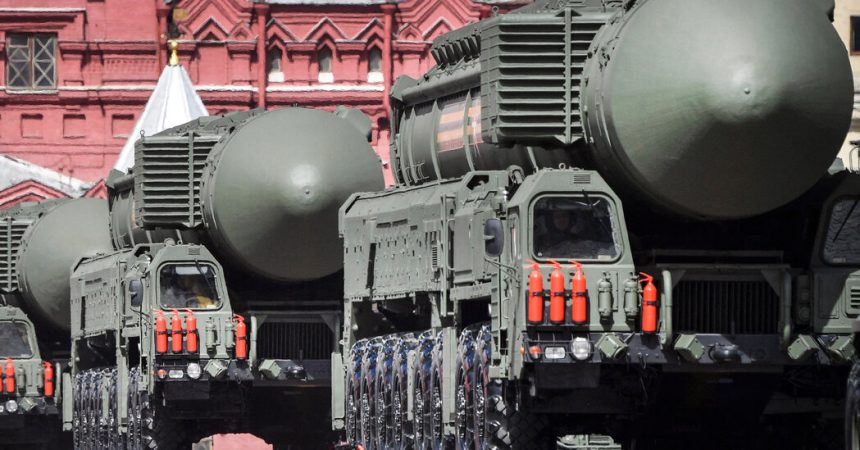Russia said on Monday that it would hold military exercises with troops based near Ukraine to practice for the possible use of battlefield nuclear weapons, ratcheting up tensions with the West after two European leaders raised the prospect of more direct Western intervention in the war.
Such weapons, often referred to as “tactical,” are designed for battlefield use and have smaller warheads than the “strategic” nuclear weapons meant to target cities. Russia’s Defense Ministry said that President Vladimir V. Putin had ordered an exercise for missile, aviation and naval personnel to “increase the readiness of nonstrategic nuclear forces to carry out combat missions.”
Russian officials claimed the order was in response to comments from the West about the possibility of more direct Western involvement in the war in Ukraine. And it came at the start of a week of extensive publicity for the Russian leader, with his inauguration scheduled for Tuesday, followed on Thursday by the annual Victory Day celebration, which commemorates the Soviet defeat of Nazi Germany in 1945.
The announcement of the exercise was Russia’s most explicit warning in its more than two-year-long invasion of Ukraine that it could use tactical nuclear weapons there.
Western officials have long worried that Russia could deploy such weapons, especially if it faced serious setbacks on the battlefield. But Mr. Putin denied as recently as March that he had ever considered it, even as he regularly reminds the world of Russia’s vast nuclear arsenal as a way of keeping in check the West’s military support for Ukraine.
The Defense Ministry said the exercise would be held “to unconditionally ensure the territorial integrity and sovereignty of the Russian state in response to provocative statements and threats of individual Western officials against the Russian Federation.”
The exercise, the Defense Ministry said, would involve forces of the Southern Military District, an area that covers Russian-occupied Ukraine and part of Russia’s border region with Ukraine. It said the exercise would take place “in the near future.”
Dmitri S. Peskov, the Kremlin’s spokesman, said the Western “threats” in question included a recent interview with President Emmanuel Macron of France published by The Economist, in which the French leader repeated his refusal to rule out sending ground troops to Ukraine.
Mr. Peskov also alluded to a comment made last week by David Cameron, Britain’s top diplomat, in which he said that Ukraine was free to use British weapons to strike inside Russia — a departure from Western governments’ typical policy of discouraging such strikes in order to avoid being drawn deeper into the war.
“This is a completely new round of escalation of tensions — it is unprecedented,” Mr. Peskov told reporters on Monday. “And, of course, it requires special attention and special measures.”
Pavel Podvig, a scholar on Russian nuclear forces, said in an interview that Russia has conducted such exercises before, though it rarely made them public. This time, however, the aim is to send a loud message, he said.
“This is a reaction to specific statements, a signal saying that Russia has nuclear weapons,” Mr. Podvig said in a phone interview.
Unlike strategic nuclear weapons, which are always in a state of combat readiness, nonstrategic ones are stored in warehouses away from the bombers, missiles, or ships that are supposed to deliver them, Mr. Podvig said. During the exercise, Russian army formations are likely to practice how they could be deployed, he said. But it would make little sense to use them in the context of the ongoing war in Ukraine, Mr. Podvig added.
“This weapon systems exist to send a signal,” he said.
Mr. Putin has not made any public comments about the drills. On Tuesday, he is scheduled to be inaugurated to his fifth term as president.
Ivan Nechepurenko contributed reporting from Batumi, Georgia.






